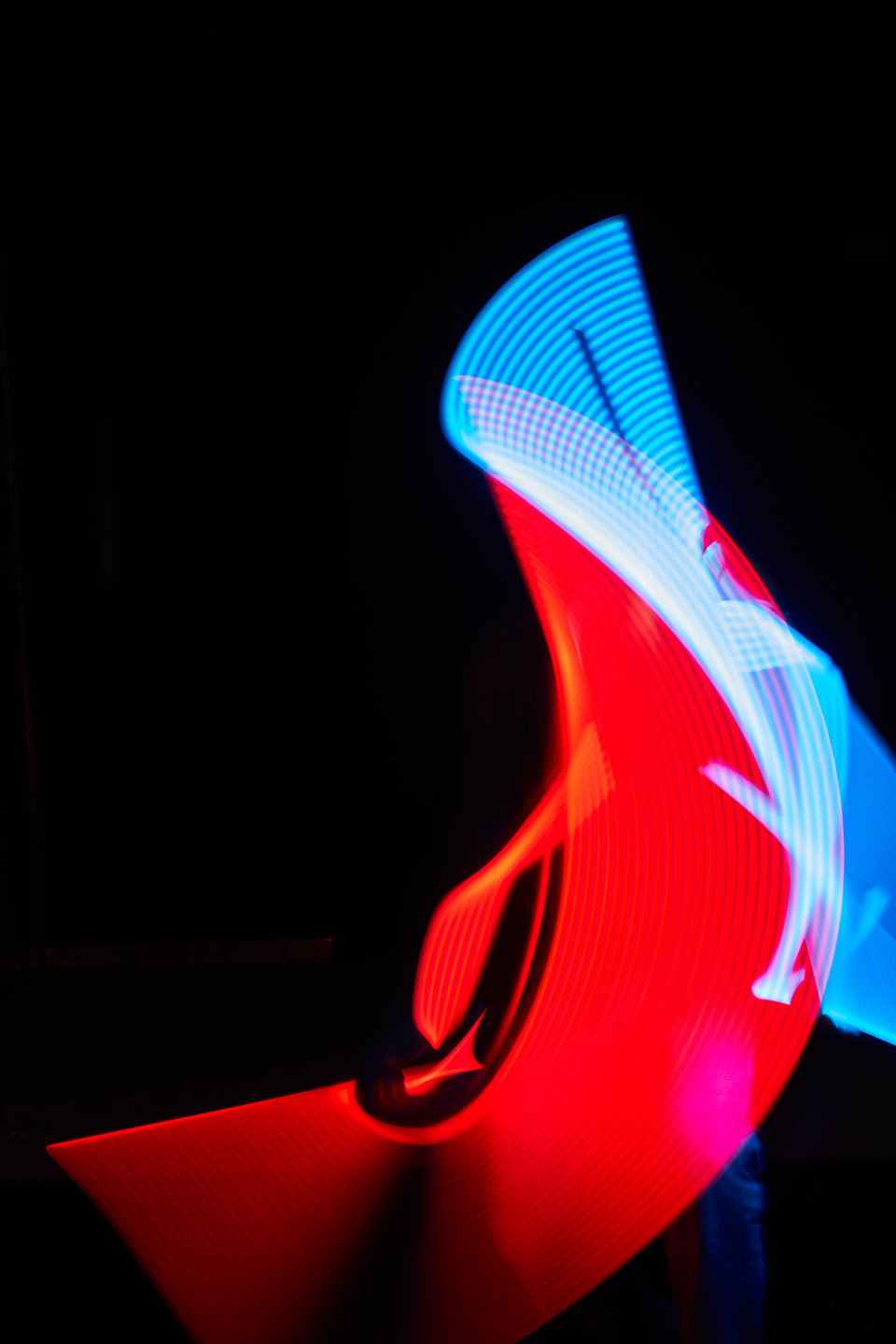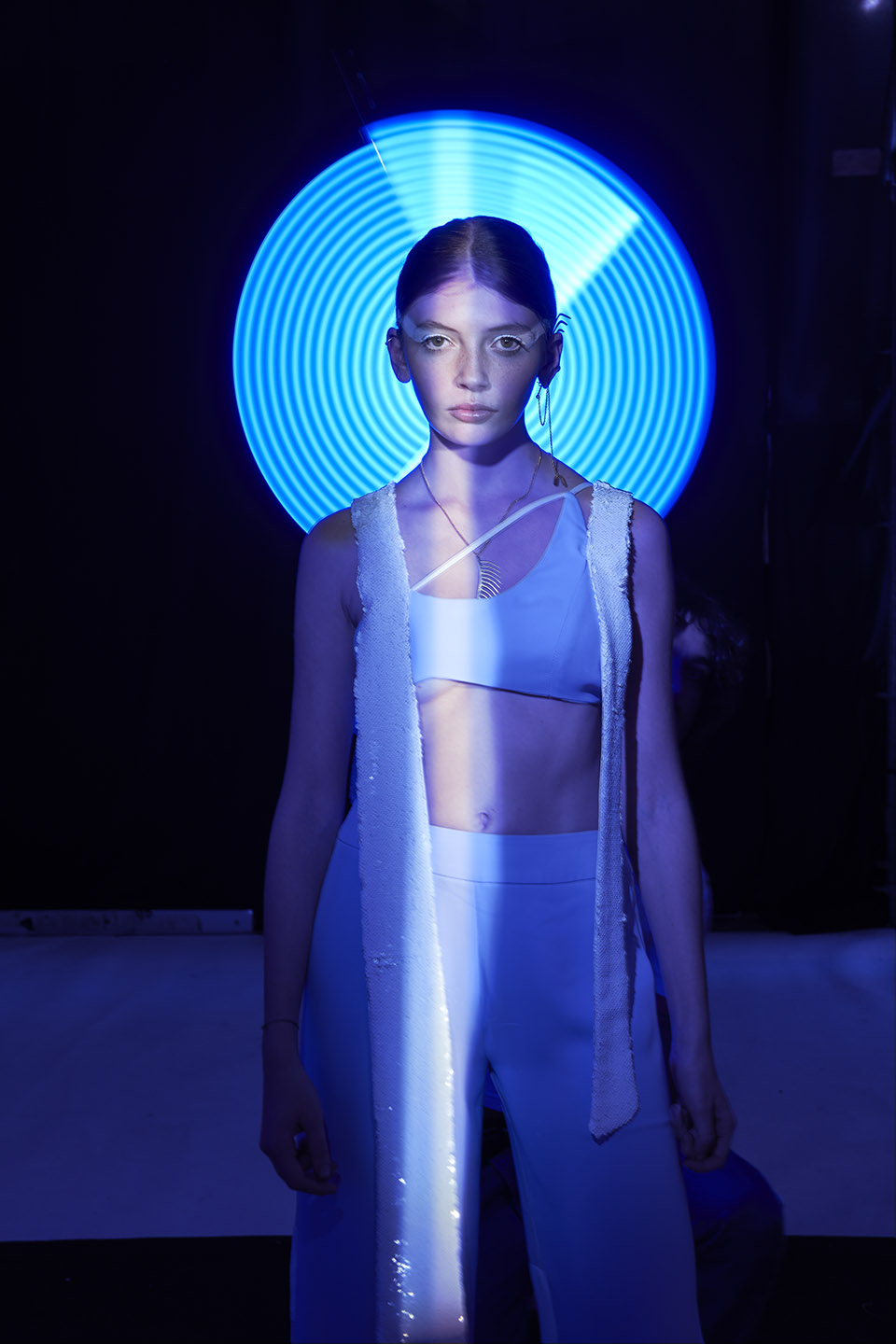
At the end of October, during this year’s Moda Madeira, we got the chance to take a closer look at the Luis Buchinho SS23 collection. Captured exclusively for ZOOT through the lens of Madeira-based photographer Henrique Seruca, the collection took on a new interpretation backstage, emblazoned with waves of light in hypnotic Soma-fever colours. Featuring a title referencing Aldous Huxley’s dystopian novel Brave New World, Luis’s collection was visually inspired by Fred Fordham’s graphic adaptation of the same name.
ZOOT spoke with Luis, who delved deeper into his inspirations for the title and his approach to fashion and society. We also caught up with Henrique to get the background on his process for capturing the collection in all its luminescence.
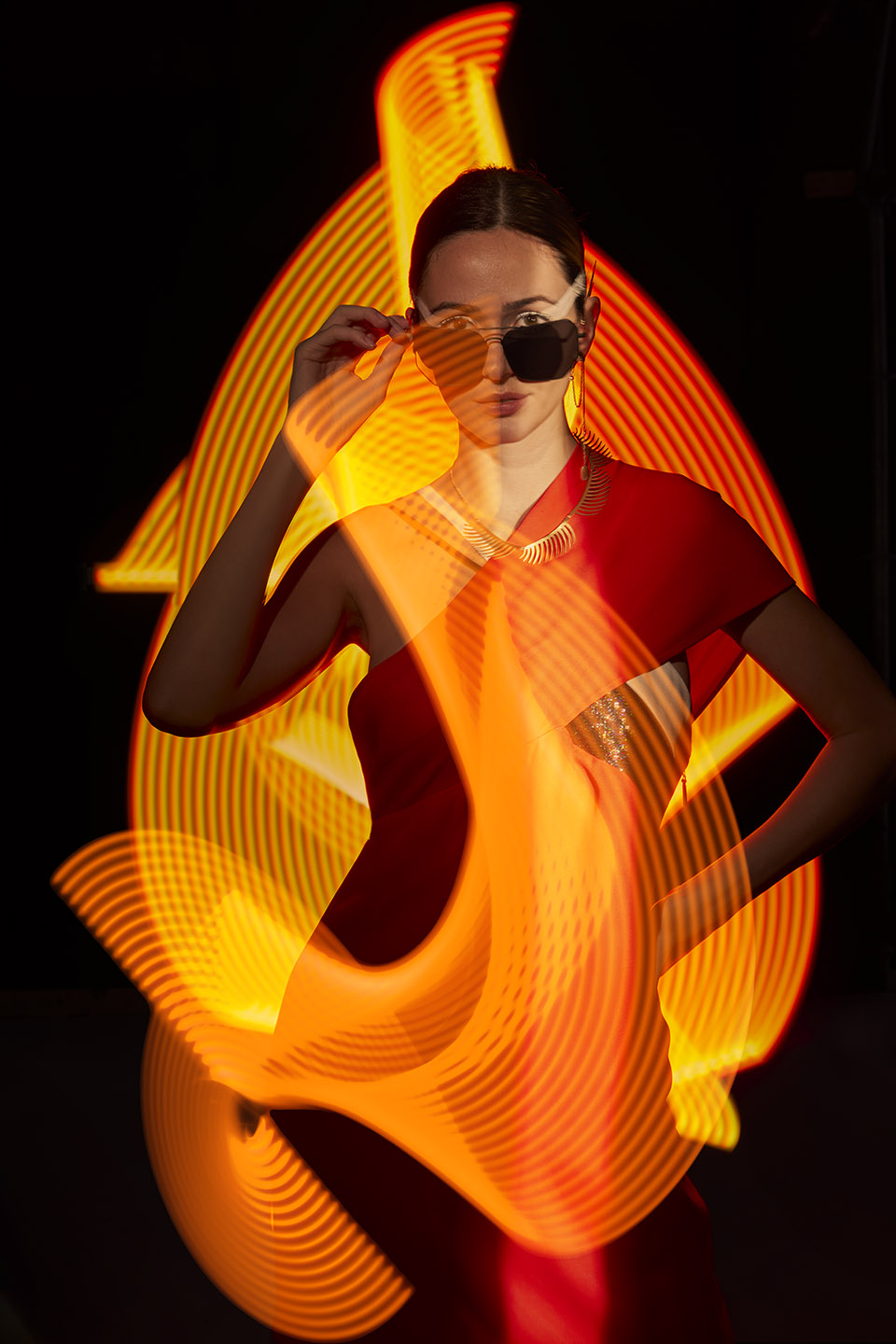
ZOOT: Where did the light concept come from?
HENRIQUE SERUCA: The concept came naturally on the set just by looking at the clothes and talking to Luis. We did some shot tests and he loved it, so we just kept playing with it.
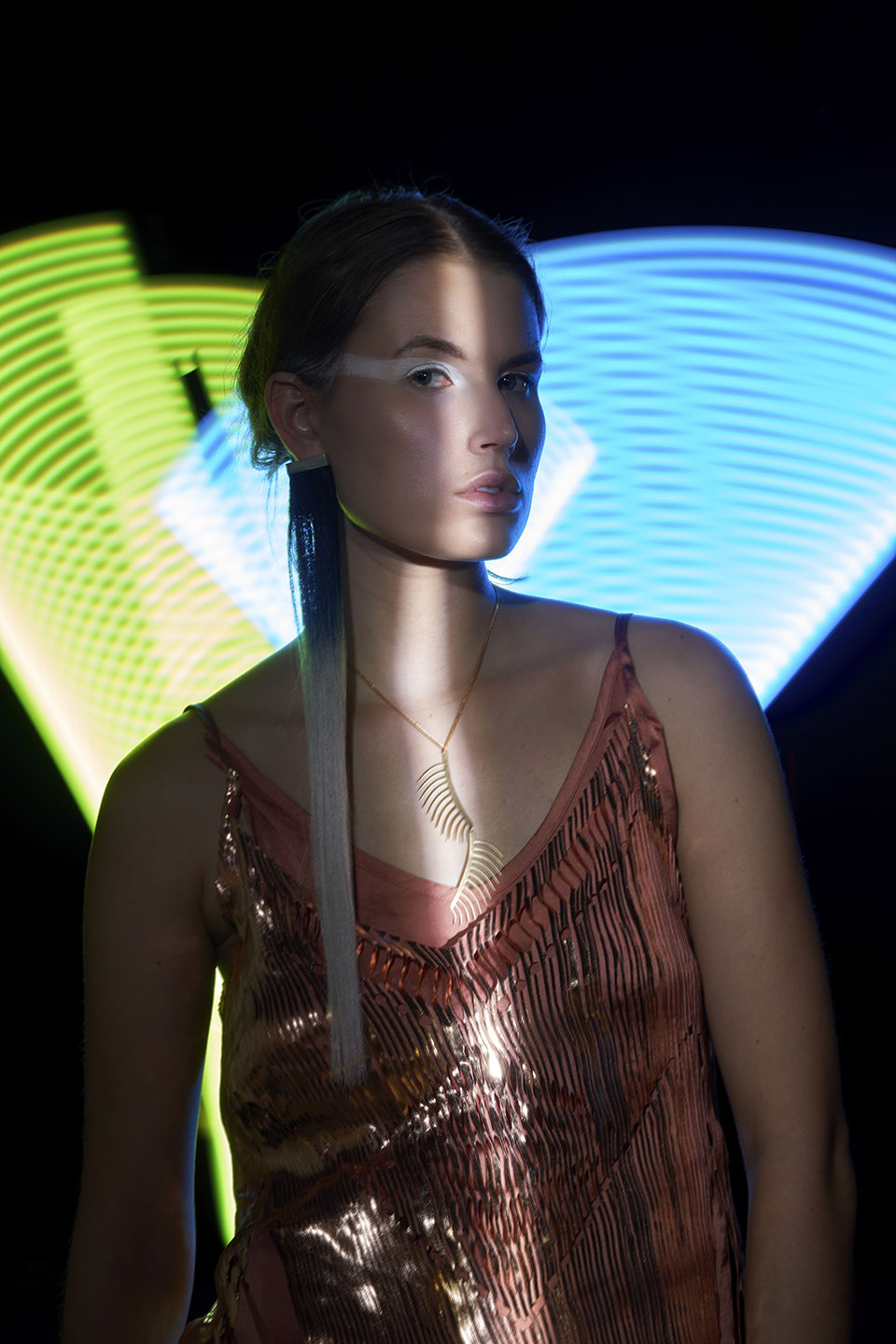
ZOOT: What was the choice behind the jewellery and how did the pieces come about? What kind of material did you use?
LUIS BUSCHINHO: They were a two-mind project, my own and a friend of mine, Cristina Hora, that has an accessories line named “CRICA”. I designed the big earring, in silver, that was actually a development of the line that I launched for Summer 2019, inspired by gyotaku. I didn’t want the accessories to follow the exact concept of the collection, in order to create something that would really stand out.
Cristina created the others, the earrings with fake hair, a true success! She came across the idea when we talked about the styling, that featured the colored fake hair (developed by Vasco Freitas). She imagined how great everything would look when gathered in a complete outfit. The two earrings, the necklaces, the golden aviator sunglasses and the ’30s inspired granny ankle boots. A killer look!
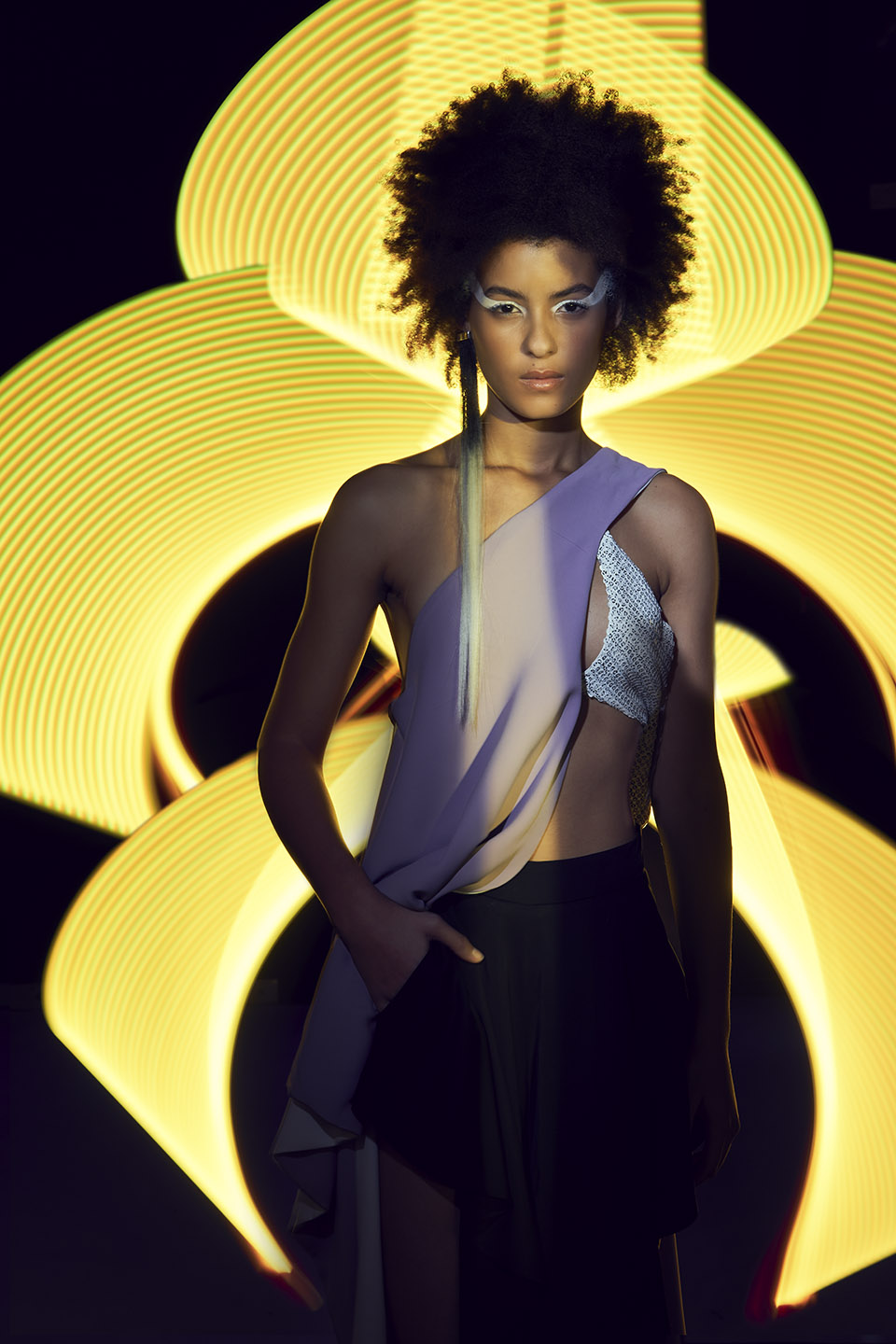
ZOOT: How do social and environmental issues influence your creative process? Have you always been interested in dystopian narratives?
LUIS BUSCHINHO: They were always present, very organically, since the start of my career. I am very aware of that nowadays, never was—but when these questions aroused worldwide, it made me realise how truly sustainable, socially aware and environmentally friendly a small brand like mine can be.
We have always worked with artisans, small ateliers and local seamstresses, paying them the right value for their supplies. We always kept our resources to a minimum waste effect—we simply could not deal with dead stock, in fabrics or final product. Some have been recycled in several ways to find new identities suitable for new collections, basically, a win/win attitude.
Dystopian narratives? I guess so. What is “big” fashion, ruled by big corporate groups, but a huge dystopian narrative?
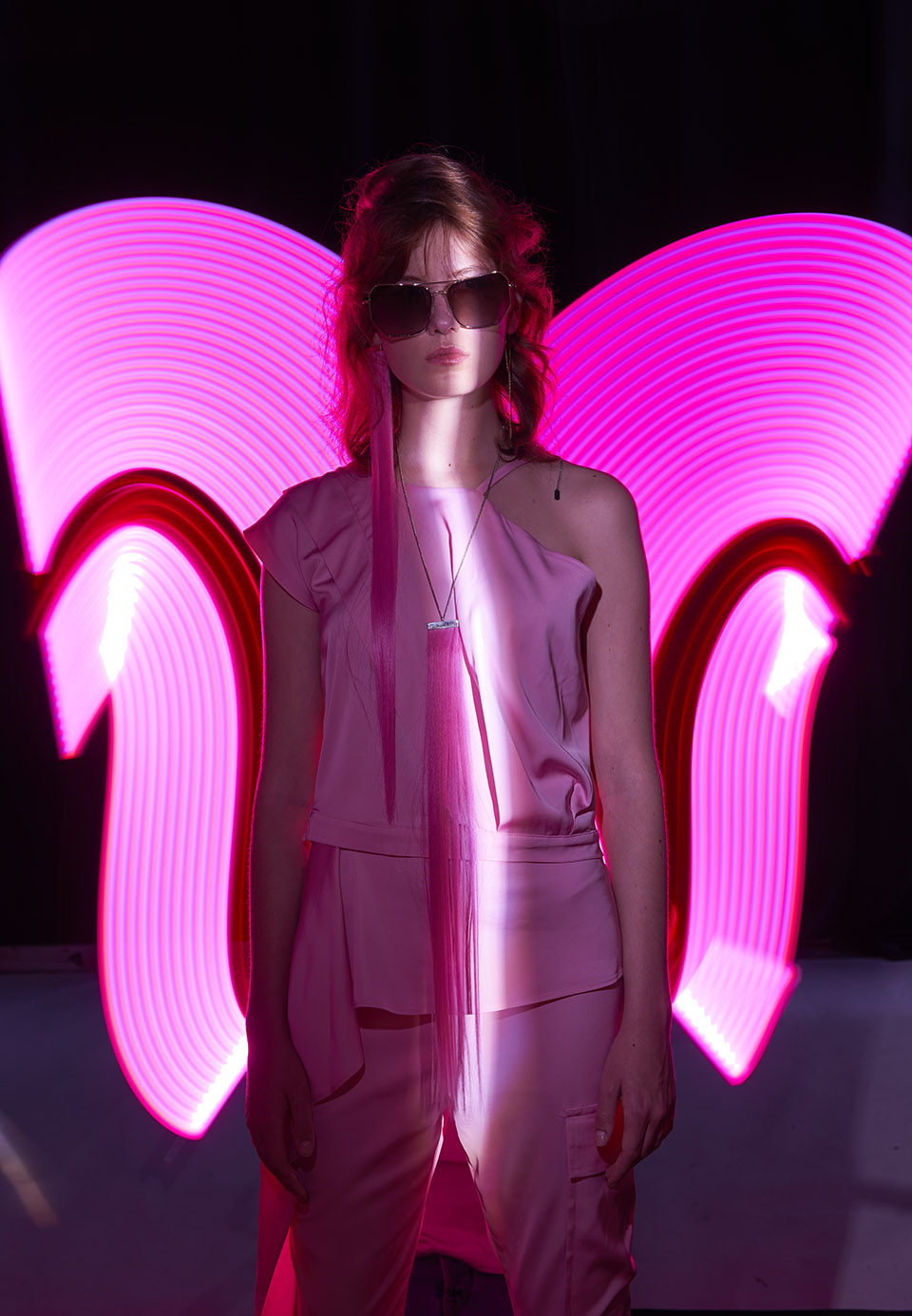
ZOOT: What would you say is the role fashion plays in social matters? Do you think we reflect how we dress based on these issues?
LUIS BUSCHINHO: It plays a definite big role. The thing that comes immediately to my mind is the growing (not new, of course) obsession with youth, manifested nowadays in the collections of high-end and low-key brands. It’s probably the major trend, capable of influencing behavior, job offers, careers, and of course, the way we look or want to look.
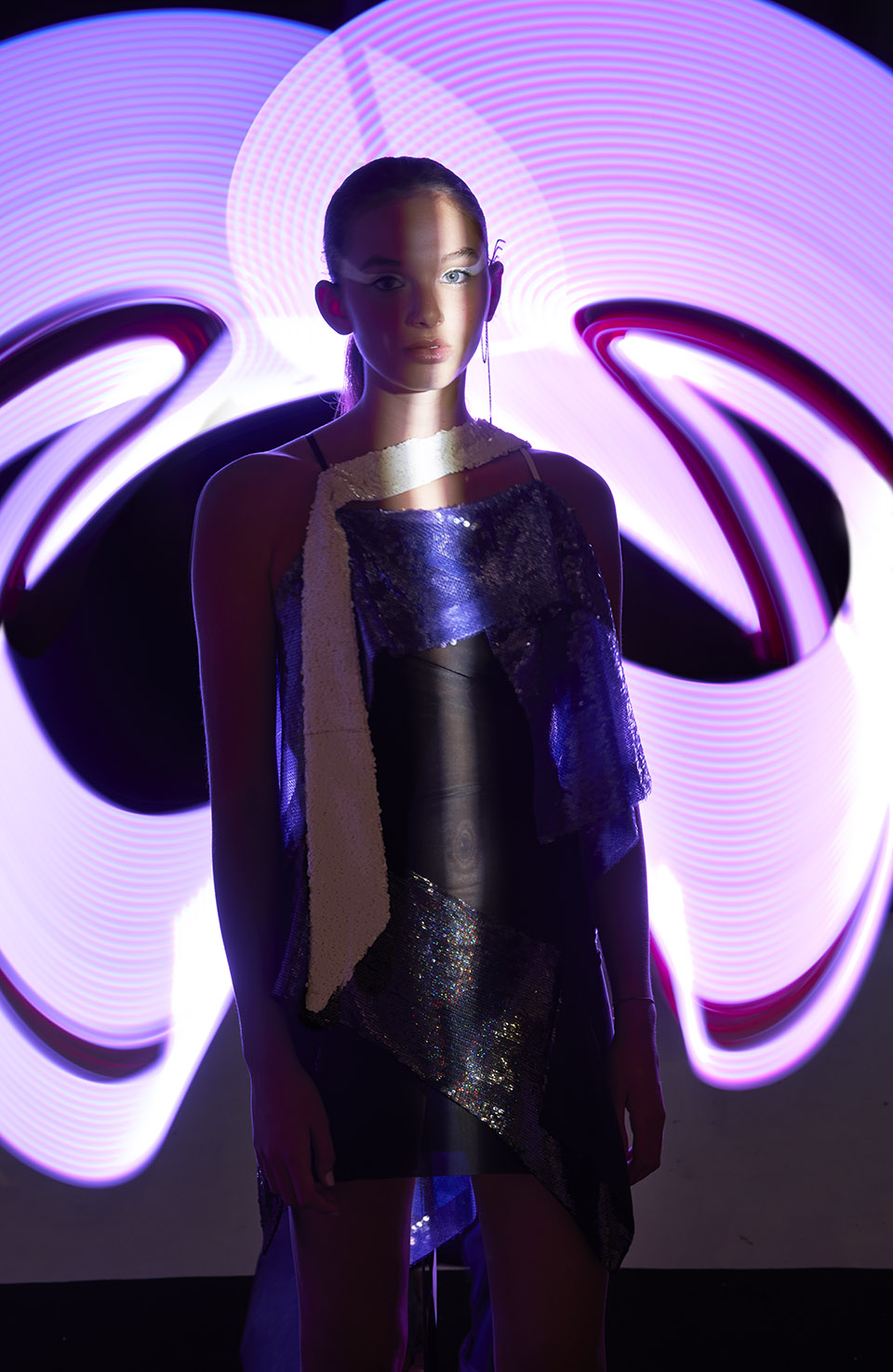
ZOOT: What struck you most about the collection?
HENRIQUE SERUCA: What struck me the most about the collection was the straight lines, the glow and a huge color palette. It seems perfect to play with.
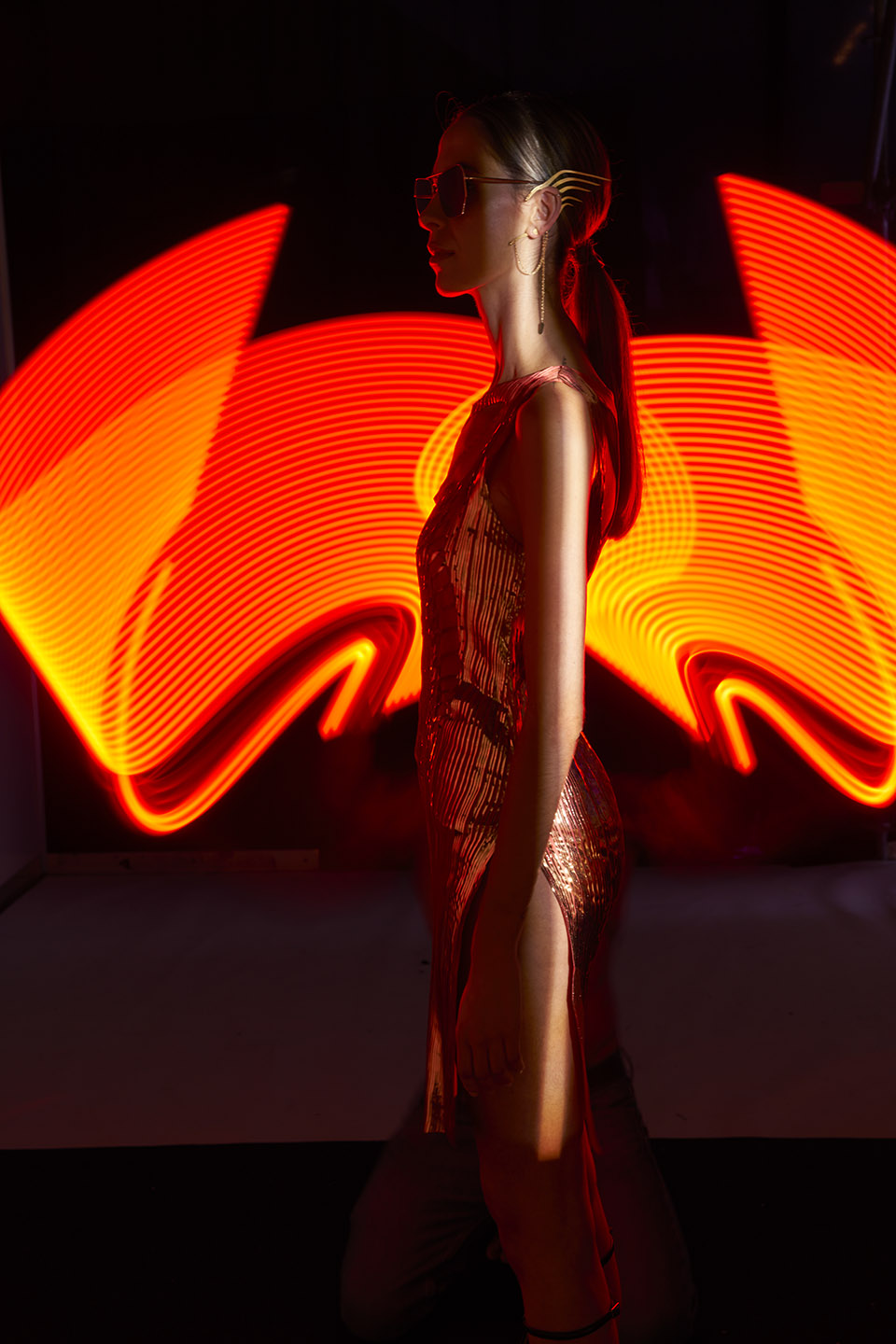
ZOOT: Why did you choose to call the collection Brave New World?
LUIS BUSCHINHO: I read [Brave New World: A Graphic Novel] very recently, not the novel written by Aldous Huxley but the adaptation illustrated by Fred Fordham, for the graphic novel—which is something that I’m totally passionate about. Find my own book very very soon!
I was very impressed by the message and forecast of it. It was launched in 1932, almost a century ago, and it predicted so many things. For me, it was definitely a population forced to be happy and show happiness throughout the use of drugs, the control of the mindset in a way that felt very natural to every individual, the lack of privacy and intimacy and its promotion, no family values and the promotion of promiscuity felt too close to what we are all experiencing now through social media to be left unnoticed. Besides, I loved the graphics of the book, and they were very helpful in creating an atmosphere with a digital, non-humanized, not necessarily robotic [vibe] that would express the feeling of fake happiness expressed in the book.
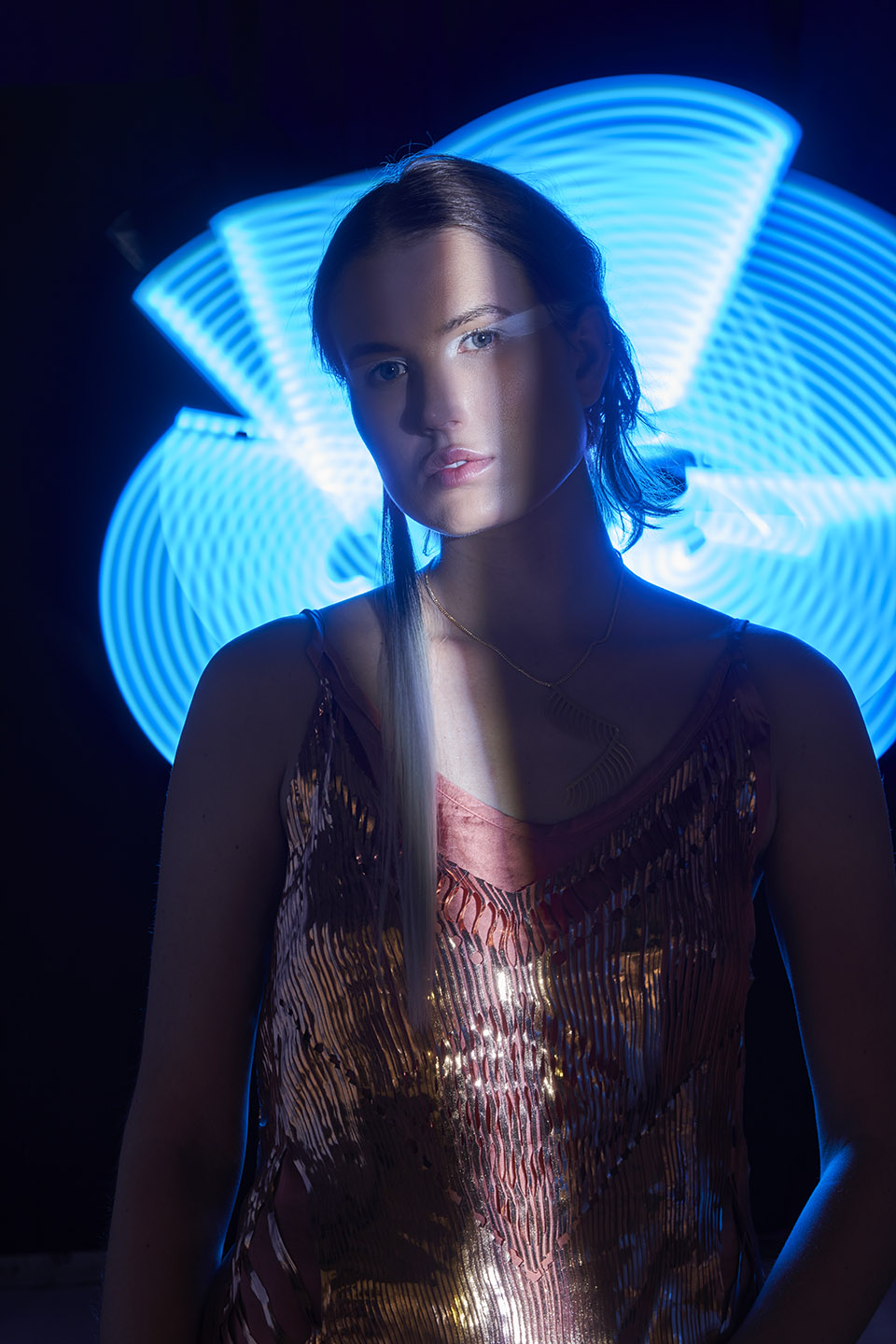
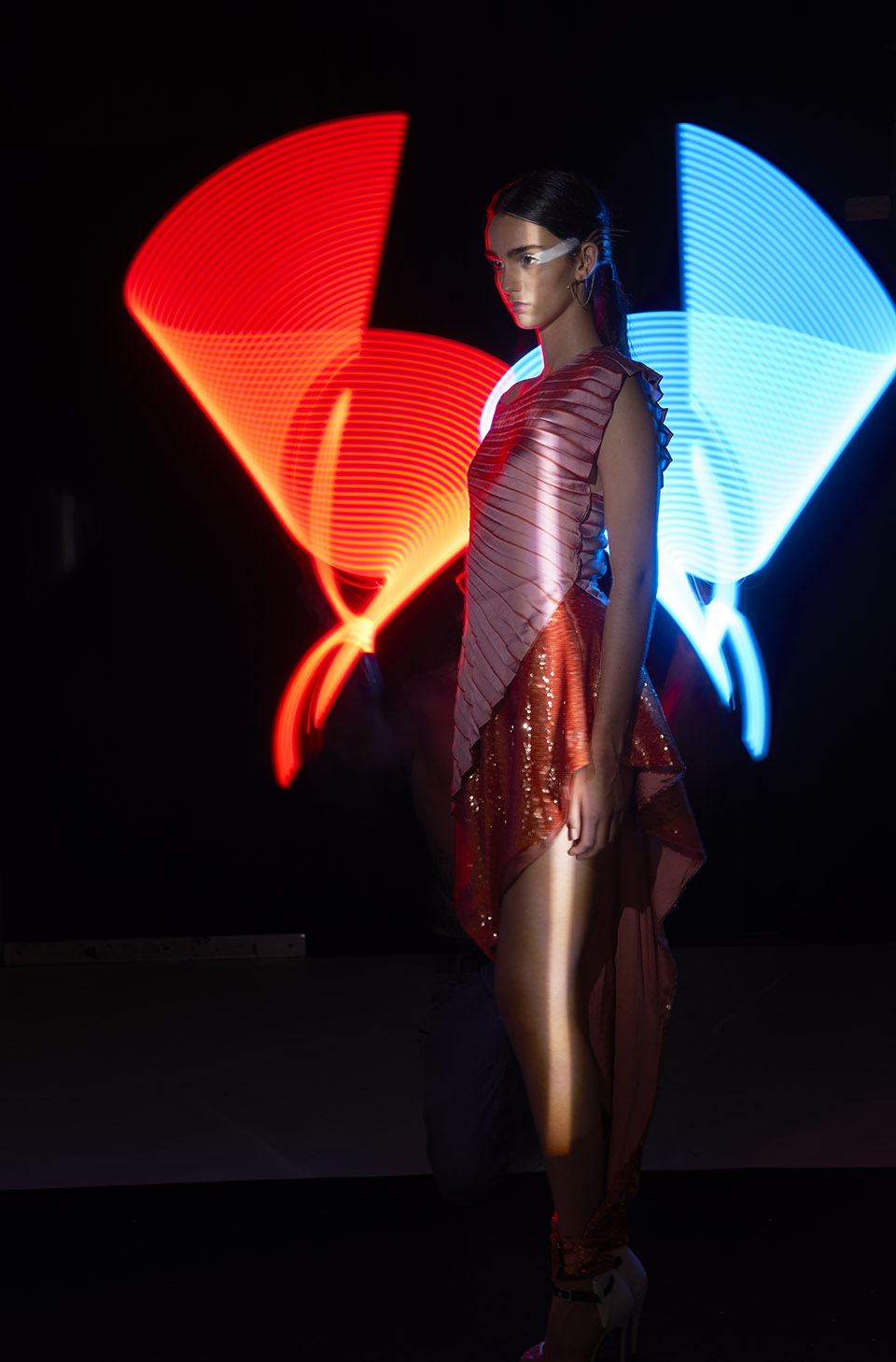
ZOOT: What was a key difference between showing in Lisbon vs. in Madeira?
LUIS BUSCHINHO: The main differences were that I edited the collection a third, and I opted to show this selection in a more performative way, as I had shown the complete PAP SS22 at ModaLisboa. The way to achieve this effect was basically in working with lighting, with a strong image shown at the LED wall (something that I usually highly dislike), that made sense with the graphic elements chosen for the season—actually, it was developed by myself for a blouse print.The projection, its reflexion, the blueish light and the choreography with shaded models exiting the space meant to be the runway created the image of a strange, digital and a bit robotic world true to the main concept.
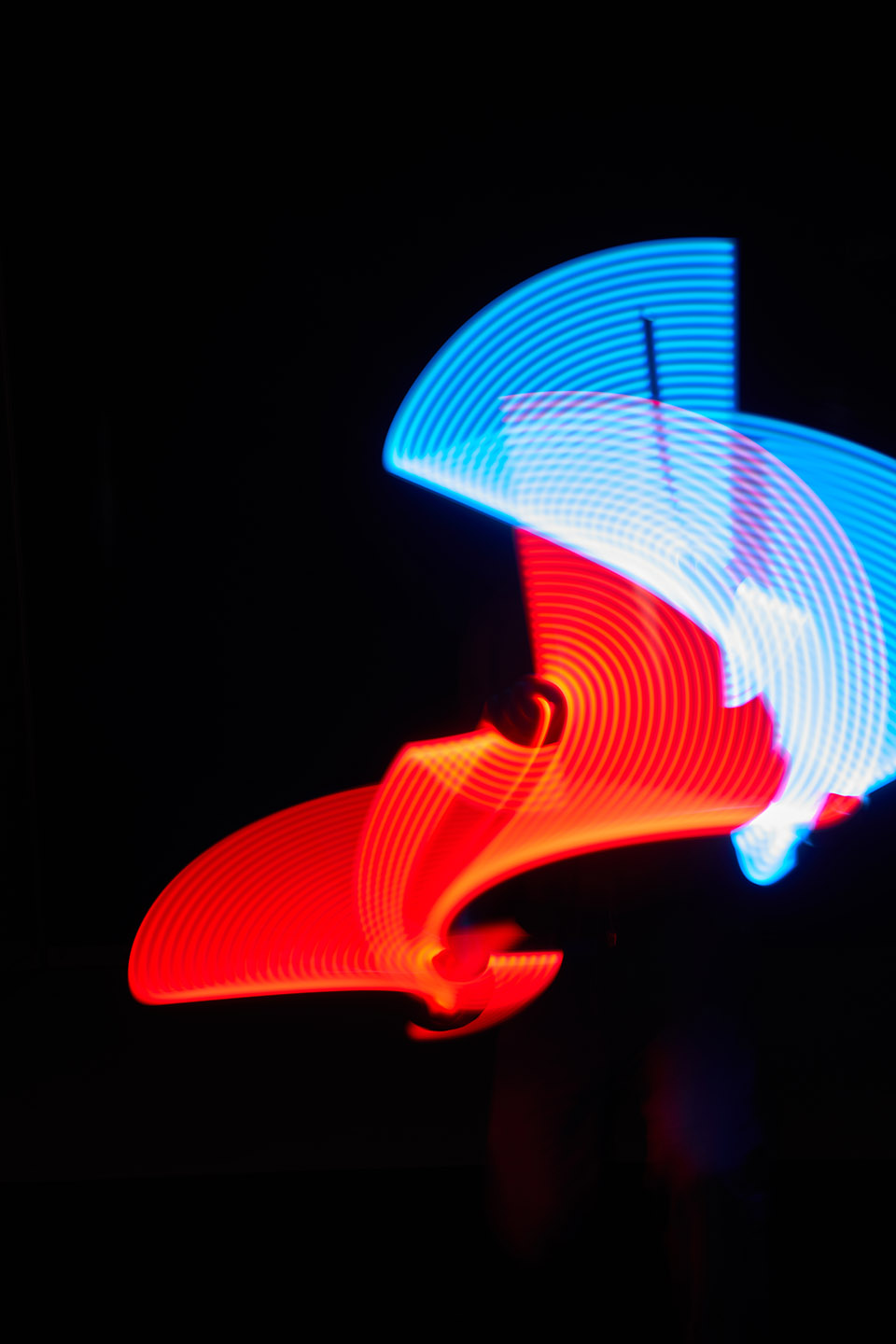
ZOOT: What was the technique you used with the lights?
HENRIQUE SERUCA: The light was very simple. The main idea was to play with wood light painting using two RGB LED tubes. We tested with some real curtain flash, but decided to do all in LED to give them more natural, feel and more organic.
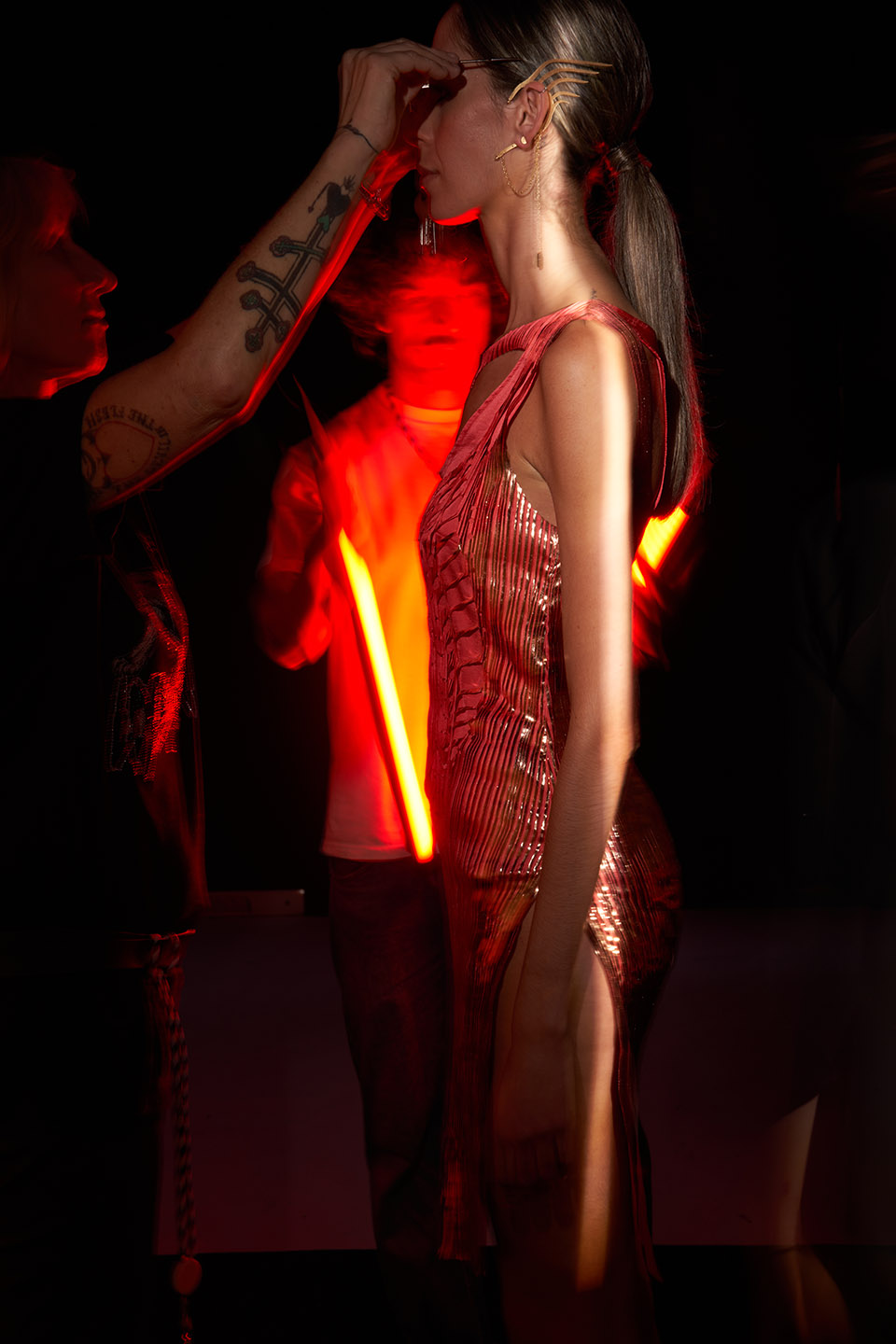
ZOOT: After many years as a designer, where do you find inspiration to introduce new, fresh elements to your collections?
LUIS BUSCHINHO: I get bored very easily, and I always thought that the toughest thing about my job would be telling different stories, with the same kind of narrative. So it became a challenge. Paying little attention to trends helps. Trends are very dangerous for a long-term brand.
View the complete collection here at ModaLisboa.

